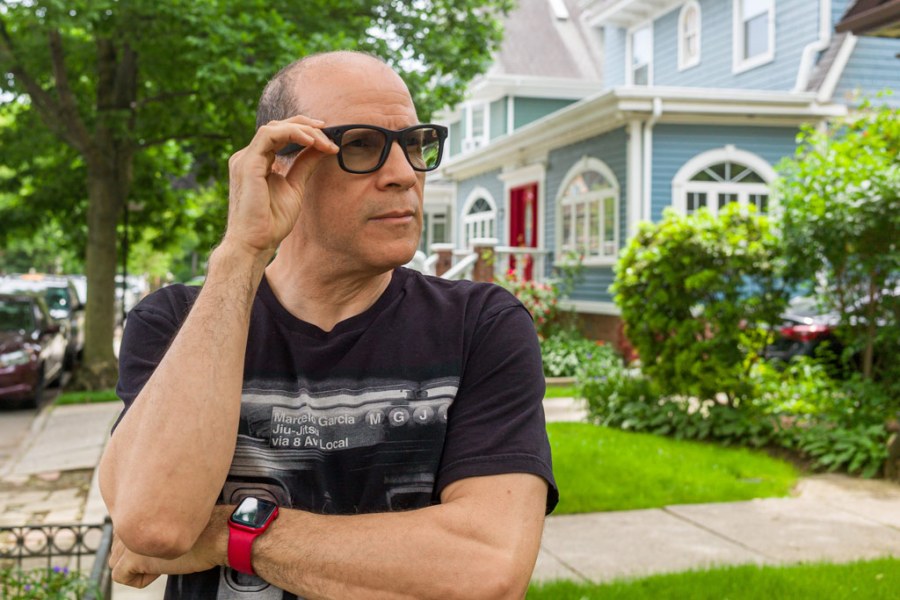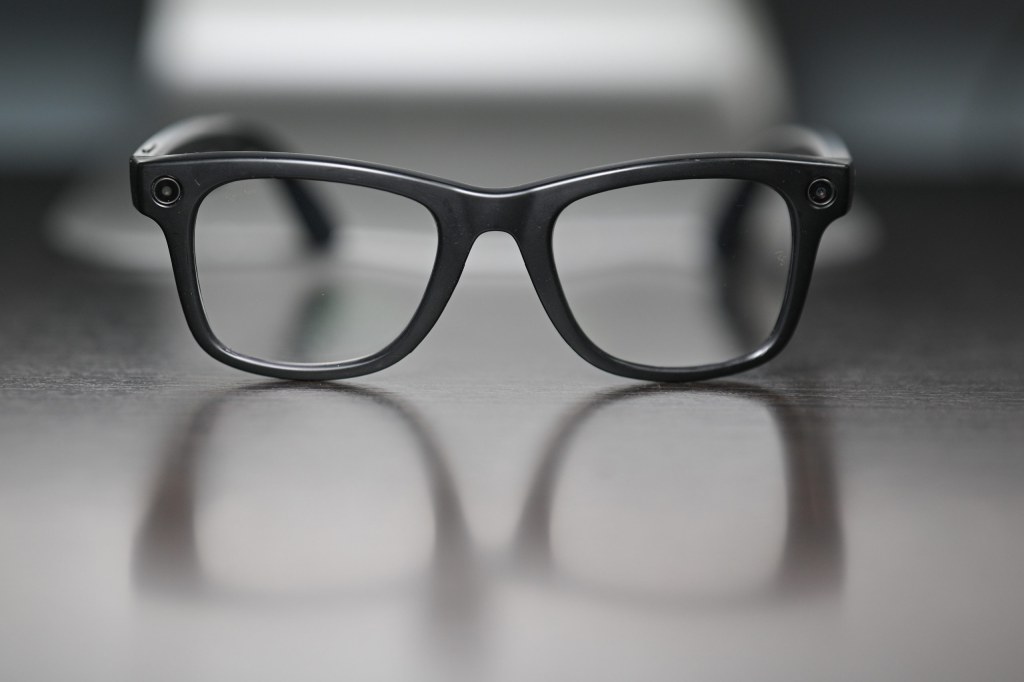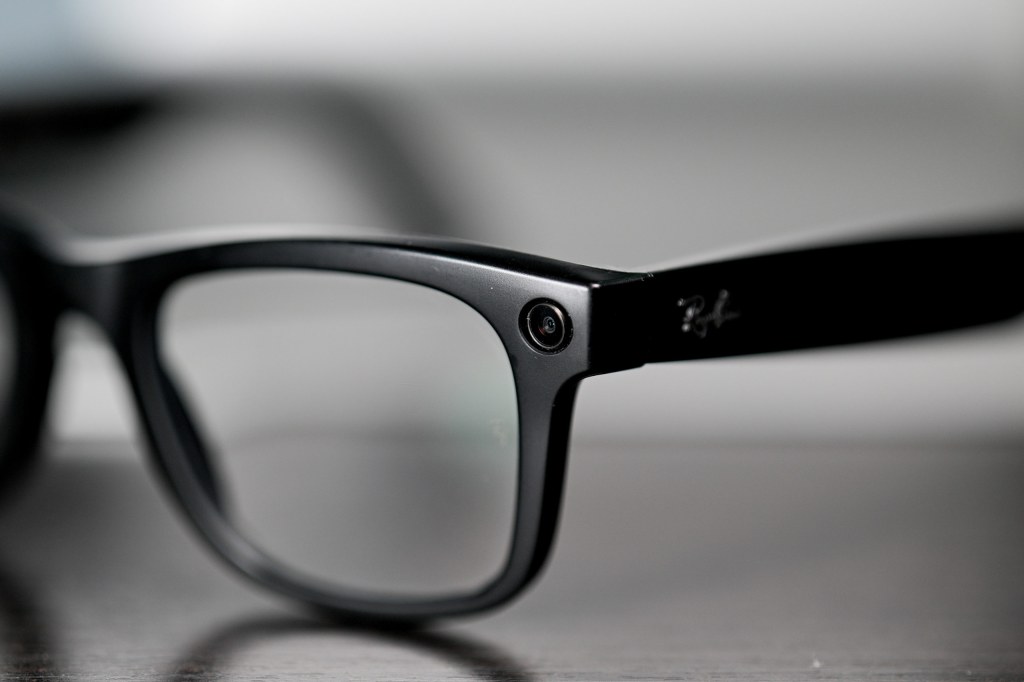The latest in wearable tech, the Ray-Ban Meta glasses are not just stylish but offer practical hands-free photo and video capture, with point of view recording, making them an ideal vlogging camera too. You can also capture BTS footage or memorable moments of everyday life. I share my experience using them for a year.
I’ve always struggled with posting consistently on social media. Platforms like Instagram and TikTok work best when a phone is used for both creation and posting of photos and videos, but I don’t enjoy using a phone for either task. Even when consuming content, I’d prefer to use a laptop or desktop computer. Instagram is the main platform that I post to, and these days, the attention is centred around Instagram Stories, which is presented in a vertical format. And if there is anything I dislike more than using a phone to create photos and videos, it would be creating content in vertical orientation on a DSLR or mirrorless camera designed to capture horizontally. Recently, I found a product that I love using, which creates videos vertically and uploads them seamlessly to Instagram and Facebook.
Ray-Ban Meta glasses at a glance:
- 12MP ultrawide camera
- HD30p vertical video recording
- 3 minutes maximum recording time
- Audio: open ear speakers with 5-mic array
- 32GB Flash Storage 500+ photos or 100+ 30s videos
- 4 hours with a single charge, charging case
- Upload directly to Instagram or Facebook
- AI search, and translation
Ray-Ban Meta glasses mimic the style of the company’s classic Wayfarer shades but offer advanced video and photo capture abilities. I’ve been using these glasses daily for over a year now, and I rarely find a product I like as much as the Ray-Ban Meta glasses. It will be difficult for Ray-Ban to sell me a future iteration of this product since there is nothing lacking in the current version.
Ray-Ban Metas are designed to create vertical content for Instagram and Facebook. The glasses operate in the same manner for posting to both Instagram and Facebook, but from this point on, I will reference only Instagram. When I got my first pair about a year ago, clips were limited to 1 minute in duration. Like Stories themselves, the glasses are created to make it easy for you to share a snippet of your world. A recent update increased the recording time to 3 minutes. Although I was OK with the original recording time, being able to record longer clips is better since I don’t have to think about how much recording time is left while filming.
The Meta app makes it easy to record a clip on the glasses and upload it directly to Instagram. I prefer to transfer the clips to my phone’s camera roll and then to my laptop to make small edits in Final Cut Pro. As a professional photographer, I use the glasses in a variety of ways on my shoots. The glasses are excellent for filming BTS videos of me packing gear, setting up lights, or entering a shooting space. Because the camera is next to my left eye, the glasses see just what I am seeing and allow the viewer to feel like they are experiencing just what I am experiencing.
The cool thing about shooting BTS with the glasses instead of using a phone is that the glasses are already on my face. My phone isn’t always in my hand. And, if I use a phone, I don’t have access to both of my hands so it’s difficult to film my point of view of performing a task like setting up a lightstand. When using Ray Ban Meta glasses in place of my phone, I don’t have to modify my behavior when I am on set, but I can still create a short video to help my followers understand my process.
One of my favourite uses for the glasses is to show my shooting process for street photography. When shooting street, my attention is on interactions between couples on the subway. When I post photos of couples embracing on subway platforms, I am asked if the photos were taken with permission. I explain that some shots are candid and others are taken with permission. But this answer leaves many questions unaddressed. Why did I push the shutter button at that point in time? What happened in the moments before and after I took the photo? How much time do I spend on the creation of a candid photograph? If I indicate that I took the photo with permission, someone may wonder what I said to secure the subject’s compliance. They may wonder how I posed the subjects to create the final image. Using the Ray-Ban glasses, I show the full shooting process, answering each one of the aforementioned questions by merely pushing the capture button. Social media has taught us that people are interested in the process as much as they are interested in the product. One might argue that the process is always more interesting than the product.
The camera in the Ray-Ban Meta glasses is located just outside the left eye, and I use my right eye to compose images when using my Leica M10. When I film a clip, the glasses’ view is unobstructed, allowing the viewer to see the scene just as it is unfolding for me. When I shoot with my Nikon Z9, I compose with my left eye. This means the glasses’ camera is blocked by the Z9, making it impossible to share the shooting process as effortlessly as I can when I use my Leica. When I want to show my Z9 shooting process, I must hold the camera at arm’s length and use the rear LCD for capture so that the glasses can capture my view of the rear LCD and the surrounding environment.
I use the glasses to record contact information for people that I photograph. In the past, if I were at a fashion show where I photographed a dozen models and wanted to tag their Instagram accounts, I would take notes on each person. “Female with blue hair @xxxxxxxxx” or “short model wearing fur @xxxxxxxxxx”. Invariably, when I get home, I would have trouble figuring out which IG account belonged to which model because my notes were not as clear as I thought. Today, I simply push the capture button on my glasses and ask the model to spell out their account and show me the page. It is so simple to do this that I often forget to tell the model that I am recording them. I have several videos in my archive where the model asks, “How are you going to remember that?” I love this method of recording the contact information because I can always match the model to the contact information without trying to decipher the meaning of a hastily composed note.
As a journalist, I like quoting my sources as often as possible. When I am at a photo conference, asking a company rep to explain a product feature or the company’s approach to a problem, I ask them for the correct spelling of their name. Using the glasses, I don’t have to stop to write this information. When interviewing the rep, I let them know that they are being recorded but that the video won’t be used, but quotes will be pulled from the recording. We can then converse as normal without me having to point a phone or camera at them. It makes things comfortable between us and the person I’m talking to feels like they are just having a normal conversation. This is a situation where the 3-minute recording time is a benefit.
One unexpected use of the Ray Bans is to listen to podcasts while on set. I knew I could play audio through the glasses speakers, but for me, this feature wasn’t a selling point. In practice, I have found it very useful. When walking around, I use a rather large pair of Bose headphones to listen to music, but I don’t always like the appearance of the headphones when I am on set or waiting in someone’s office. I feel disconnected from my surroundings when wearing headphones and I don’t like the implication they give others that I am tuned out of our shared environment. The built-in speakers of the Ray Bans are excellent for spoken audio. The sound quality is excellent and I use them for situations where headphones would be inappropriate. The dentist’s chair is perhaps the best, most unexpected usage. In a normal environment, no one else hears what I am listening to as the sound doesn’t bleed much.
The Ray-Ban Meta glasses can be used for music as well, but the sound quality is understandably inferior to my headphones so it is rare that I use them for music. The glasses are excellent for phone calls because you don’t have to take out your phone and connect a Bluetooth earpiece, nor do you have to hold the phone to your ear. Simply answer the call and speak as you normally would, keeping both hands free to continue working. The speakers are remarkable when used to play back clips created with the glasses. The glasses record sound from 5 microphones and when played back into the glasses, the sound comes at you from the front, side, and rear in accordance to where the sound is coming from in the clip. And because the glasses are not closed off the way headphones are, it feels like the sound is coming from your environment rather than a speaker. It isn’t possible to describe this in words, but the clips sound great when played back in the glasses that created them.
There are times when I am working without an assistant and I want someone on set to film a quick BTS clip for me. I like giving them the glasses because they can film the clip with minimal effort. They need only put on the glasses and watch what is going on. I don’t have to provide any instructions aside from asking that they keep their head more still than normal. I don’t feel I am imposing on that person, and I can give the glasses to anyone on set and generate a high-quality clip.
I am so fond of the glasses that I own two pairs. One is fitted with prescription reading glasses for when viewing my iPad, working on my laptop, or reading a book. It is difficult, but not impossible, for me to focus my Leica while wearing this pair. My second pair has standard lenses. I use these for my Leica shots, and when I ask someone else to film for me. One of the best things about the glasses is that they are stylish and don’t look much different from standard Ray-Ban eyewear. You may recall the underrated Google Glass eyewear from a decade ago. They functioned well but looked odd. My Ray-Ban Meta glasses are stylish, and I’d be OK wearing them even if they didn’t have a camera. Both of my glasses have transition lenses that darken in sunlight. They don’t get as dark as standard sunglasses, but do darken sufficiently for me in bright environments.
While the focus of this article is how I use the glasses as a professional photographer, I must mention what I feel to be the single best use case scenario for these glasses. If you have a child around the age of 3-6, there are hundreds of ordinary, but memorable scenes happening throughout the day. Children change quickly, and little moments like being asked by your child to tie their shoes, or confronting your child about who broke the lamp, occur in only one short stage of the child’s development. It isn’t practical to run and grab your phone, open the camera app, and press record. The moments are fleeting, and anything you do that is out of the ordinary will alter the interaction. With Ray Ban Metas, you can interact with your child as normally and whenever you are experiencing something that you might want to preserve, you touch the capture button and create a video showing exactly what your eyes saw at that moment. Years later, the videos captured from your viewpoint with the Ray-Ban Metas will be your favourite videos of your child.
When people ask me about the glasses, I usually describe them as a perfect product. I’ve talked at least 5 people into buying them, and while I’ve yet to meet another user who loves this product as much as I do, I haven’t heard of anyone regretting the purchase either. The return policy is excellent and I purchased and returned 2 pairs with different styles and finishes (matte vs glossy) before settling on the pair I kept. The glasses have an AI feature that can provide information about the things the camera sees. You can ask, “What am I looking at?” and the glasses will provide information. There is also a real-time translation feature for a few languages, including French and Spanish. These features don’t interest me and although I use the glasses daily, I haven’t bothered to check them out.
The features described in this article are more than enough for the money I spent on the glasses. I’m OK if this product is never improved this iteration, but if I had to suggest one change, I would like the glasses to weigh less. They are heavier than standard reading glasses or sunglasses, and I’m aware of this when I use them for extended periods. It’s a minor complaint for such a great product. While I produce most of my Ray-Ban videos for public consumption, the clips that are most special to me are the ones showing the ordinary moments of my life. I can’t wait to see what I capture next.











